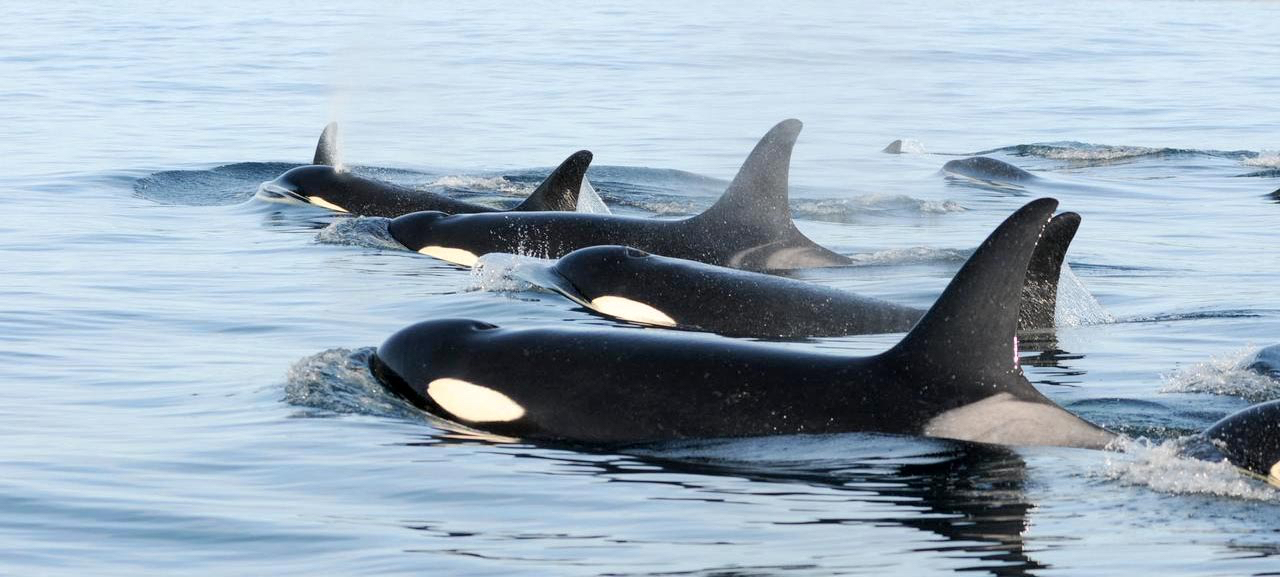VANCOUVER ISLAND, B.C. – While the federal government announced measures to help protect southern resident killer whales on Friday, there is still work to be done.
So says a West Coast-based conservation group.
Misty MacDuffee is the wild salmon program director with the Raincoast Conservation Foundation, and said the new rules are a step in a positive direction.
“It’s the most comprehensive package that we’ve seen so far,” MacDuffee said. “They have recognized a lot of the areas that need threat reduction and they’ve made some important strides on that road, but it’s not everything. It’s a long way from everything that these whales need to recover, but they’ve done a lot of important things.”
As of July 1, 2018, there were 75 southern resident killer whales alive in the world.
A key requirement has vessels mandated to stay at least 400 metres away from all killer whales as of June 1.
This includes all recreational boats and whale watching vessels. The exception is commercial whale watching companies who have obtained authorization from the Minister of Transport, who would be allowed to approach transient killer whales up to 200 metres.
Vessels are also asked to reduce their speed to less than seven knots if they are within 1,000 metres of killer whales in certain areas, and to turn off their echo sounders and turn their engines to neutral idle if a whale is within 400 metres.
Other measures include:
- Prey –Canada is moving forward with area-based closures for recreational and commercial salmon fisheries in several key foraging areas, and the pilot implementation of a voluntary bubble in the vicinity of killer whales.
To increase the abundance of Chinook salmon, the primary prey for these whales, the DFO has committed to releasing an additional one million juvenile Chinook annually from Chilliwack Hatchery for five years to support southern resident killer whale recovery.
- Noise from Marine Shipping – Commercial vessels will be asked to slow down over a longer distance through Haro Strait and Boundary Pass, starting as early as June 1. Inshore traffic will be asked to transit further from shore in the Strait of Juan de Fuca.
- Interim Sanctuary Zones – To maximize protections in three key foraging areas, interim sanctuary zones will be created off Pender Island, Saturna Island and at Swiftsure Bank. In addition to fishery closures, no vessel traffic will be permitted in these areas from June 1 to October 31, subject to certain exceptions for emergency and Indigenous vessels.
- Contaminants – To further reduce contaminants affecting whales and their prey, the DFO is enhancing regulatory control of five key persistent organic pollutants (flame retardants, oil and gas repellents) and prohibiting two toxic flame retardants.
MacDuffee said the foundation hopes to see future steps including protection for southern resident killer whales for their full range, not just within critical habitat.
“We need targets for noise reduction from all vessels including shipping, ferries, (and) all domestic vessels,” she added.
“They also need those quiet and clean waters because the noise and the disturbance from vessels prevents them from catching their prey successfully.”
She also believes the legislation on contaminants can be taken a step further, “to phase out chemicals and prevent the ongoing contamination of salmon which is making its way into whales.”
On that note, MacDuffee said stronger measures are needed on Chinook harvest reduction.
Southern resident killer whales follow the migration of Chinook salmon.
“Historically, the Fraser River would have had Chinook returning to it from March until October, and so the whales would come into the Salish Sea and feed on those Chinook returning largely to the Fraser but also to rivers in Puget Sound and throughout Georgia Strait,” MacDuffee said. “And they would be eating those fish in the waves that they were returning back to those rivers.”
She added that the southern killer resident whales will travel all the way to California to feed on the Chinook salmon returning to rivers across the entire Pacific Northwest and B.C.






